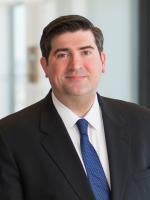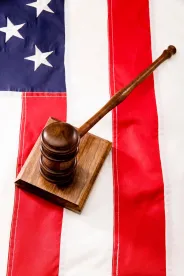With increasing regularity, plaintiffs are supporting their motions for class certification with expert testimony. Lower courts have divided, however, on whether to perform their evidentiary “gatekeeping” function at the class certification stage – and thereby subject the expert testimony to the admissibility standard of Daubert v. Merrell Dow Pharmaceuticals, 509 U.S. 579 (1993) – or whether to reserve such scrutiny for trial. Last year, the Supreme Court granted certiorari in Comcast Corporation v. Behrend to address “[w]hether a district court may certify a class action without resolving whether the plaintiff class has introduced admissible evidence, including expert testimony, to show that the case is susceptible to awarding damages on a class-wide basis.” Today, a divided Court echoed its recent decision in Dukes and held that the class in Behrend had been “improperly certified” because the Third Circuit “refus[ed] to entertain arguments against [the plaintiffs’] damages model that bore on the propriety of class certification, simply because those arguments would also be pertinent to the merits determination,” which “ran afoul of our precedents requiring precisely that inquiry.”
Before the district court, the plaintiffs alleged that Comcast, which provides telecommunications services to residential and commercial customers, violated federal antitrust law by engaging in “clustering,” that is, a “strategy of concentrating operations within a particular region.” The plaintiffs proposed four theories to demonstrate that Comcast’s alleged conduct was unlawful. Over Comcast’s objections, the district court certified a class of more than two million current and former Comcast subscribers as to one of those four theories – that clustering deterred “overbuilders” from entering a given market. In certifying the class, the district court found that antitrust impact and damages could be proven with evidence that was common for the entire class. It did so even though the plaintiffs’ sole evidence in support of classwide damages – a model prepared by their purported expert – was based on the collective impact of all four of their liability theories, including the three the court had rejected because those theories could not be determined on a classwide basis.
A divided panel of the Third Circuit affirmed. Comcast argued on appeal that the plaintiffs’ theory of classwide damages was deficient because, among other shortcomings, it failed to isolate the damages resulting from the one theory of antitrust impact that the district court thought could be established on a classwide basis. The majority of the Third Circuit panel refused to consider that argument, however, finding that “attacks on the merits of the methodology . . . have no place in the class certification inquiry.” Judge Jordan dissented, finding that the plaintiffs’ evidence of classwide damages was neither relevant nor sufficient to support class certification. “Because the only surviving theory of antitrust impact is that clustering reduced overbuilding,” he reasoned, “for [the expert’s] comparison to be relevant, his benchmark counties must reflect the conditions that would have prevailed in the Philadelphia [Designated Market Area] but for the alleged reduction in overbuilding.”
Today, the Supreme Court reversed.
Writing for the majority,[1] Justice Scalia “emphasized” that it “‘may be necessary for the court to probe behind the pleadings before coming to rest on the certification question,’ and that certification is proper only if ‘the trial court is satisfied, after a rigorous analysis, that the prerequisites of Rule 23(a) have been satisfied.’” The majority explained that “[s]uch an analysis will frequently entail ‘overlap with the merits of the plaintiff’s underlying claim.’” These “same analytical principles” govern Rule 23(b) – “[i]f anything, Rule 23(b)(3)’s predominance criterion is even more demanding than Rule 23(a).”
The majority held that the courts below failed to conduct a rigorous analysis of the evidence that had a bearing on certification. It reasoned that, “[b]y refusing to entertain arguments against [the plaintiffs’] damages model that bore on the propriety of class certification, simply because those arguments would also be pertinent to the merits determination, the Court of Appeals ran afoul of our precedents requiring precisely that inquiry.”
The majority then determined that, “under the proper standard for evaluating certification, [the plaintiffs’] model falls far short of establishing that damages are capable of measurement on a classwide basis.” It explained:
We start with an unremarkable premise. If [the plaintiffs] prevail on their claims, they would be entitled only to damages resulting from reduced overbuilder competition, since that is the only theory of antitrust impact accepted for class-action treatment by the District Court. It follows that a model purporting to serve as evidence of damages in this class action must measure only those damages attributable to that theory. If the model does not even attempt to do that, it cannot possibly establish that damages are susceptible of measurement across the entire class for purposes of Rule 23(b)(3). Calculations need not be exact, but at the class-certification stage (as at trial), any model supporting a “plaintiff’s damages case must be consistent with its liability case, particularly with respect to the alleged anticompetitive effect of the violation.”
It then found that the courts below had not ensured that the liability and classwide damages theories were in fact consistent such that the latter could be considered relevant and admissible:
The Court of Appeals simply concluded that [the plaintiffs] “provided a method to measure and quantify damages on a classwide basis,” finding it unnecessary to decide “whether the methodology [was] a just and reasonable inference or speculative.” Under that logic, at the class-certification stage any method of measurement is acceptable so long as it can be applied classwide, no matter how arbitrary the measurements may be. Such a proposition would reduce Rule 23(b)(3)’s predominance requirement to a nullity. . . . “The first step in a damages study is the translation of the legal theory of the harmful event into an analysis of the economic impact of that event.” The District Court and the Court of Appeals ignored that first step entirely.
Four justices dissented “on both procedural and substantive grounds . . . .”[2] Procedurally, the dissent posited that certiorari had been “improvidently granted” because the question on which the Court granted review differed from the question Comcast had presented in its petition. Substantively, the dissent criticized the majority opinion as relying “on its own version of the facts” and argued that the majority should not have overturned the lower courts’ factual findings regarding the plaintiffs’ damages model.
[1] Chief Justice Roberts and Justices Kennedy, Thomas, and Alito joined in the majority opinion.
[2] Justices Ginsburg and Breyer wrote, and Justices Sotomayor and Kagan joined, the dissenting opinion.




 />i
/>i

